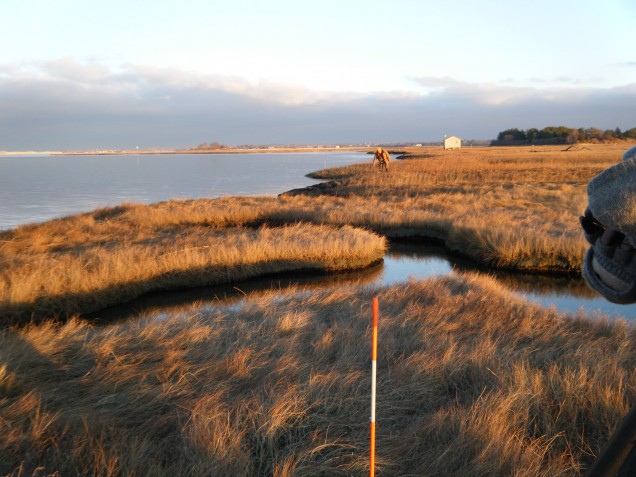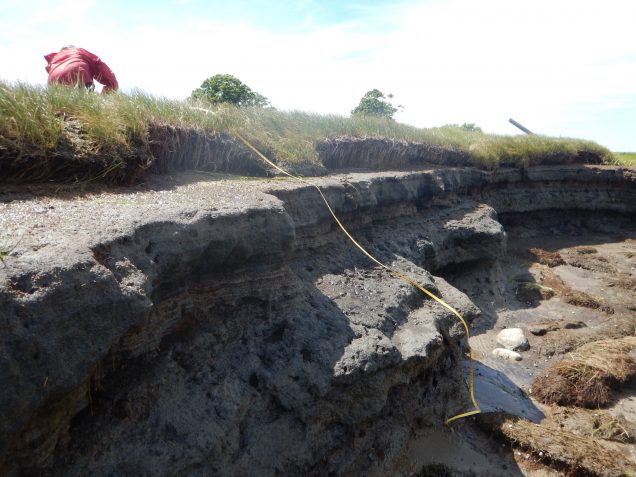Marsh Edge Erosion
The Great Marsh has undergone substantial geomorphic change over the past 50 years. These changes have been attributed to lateral erosion (marsh edge erosion), sedimentation redistribution, mosquito ditching, and marsh ponding caused by long-term increases in sea level and reduced sediment load from reforestation of the watershed. In recent years, there has been an increase in reports of marsh edge erosion within the system, particularly in Plum Island Sound and Essex Bay. Potential causes of loss include: 1) waves eroding banks; 2) sea-level rise increasing water logging; 3) eutrophication decreasing plant investment into belowground biomass; and 4) hyper-abundant green crabs destabilizing banks through the creation of burrows. Our project includes analyzing historical imagery to determine rates of marsh edge erosion, establishing a long-term monitoring program at select sites using a network of permanent observation and photo stations and survey-grade RTK-GPS technology, as well as collecting biological, chemical, and physical data to help us identify the primary cause(s) of marsh edge loss.




